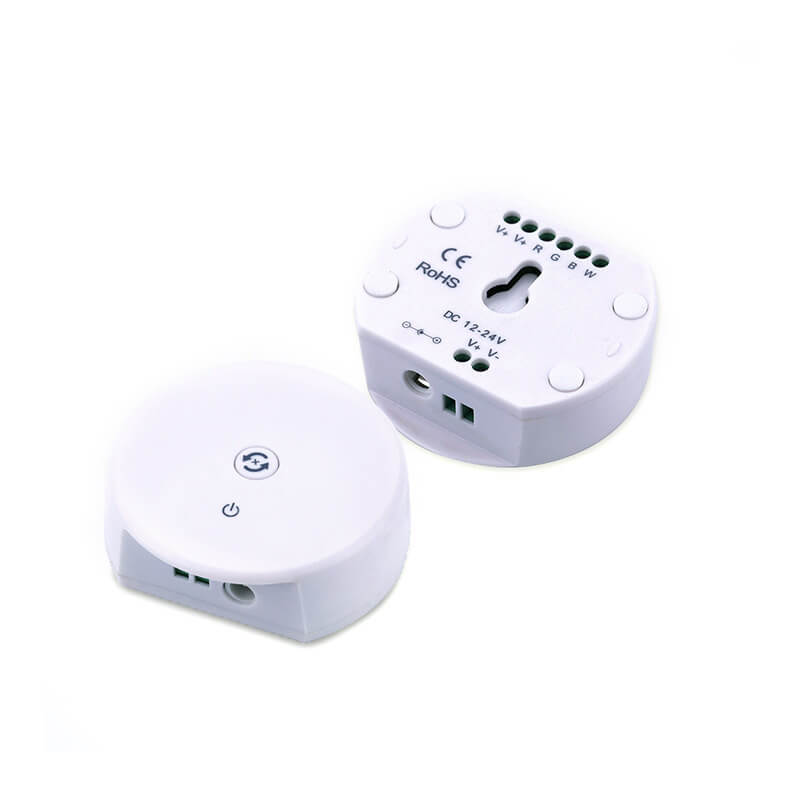Table of Contents
ToggleExploring the World of LED Light Controllers: One Size Does Not Fit All
In today’s world of smart lighting, LED light controllers have become an integral part of illuminating our homes, offices, and public spaces. With their ability to control brightness, colors, and patterns, these controllers offer a level of customization and convenience that was once unimaginable. However, not all LED light controllers are created equal. They come in various shapes, sizes, and functionalities, each designed to cater to specific lighting needs and preferences.

Control Methods: Putting You in the Driver’s Seat
One of the primary differentiators among LED light controllers is the control method they employ. Some controllers come with a handheld remote, allowing you to change colors, patterns, and dimming options wirelessly from the comfort of your couch or anywhere within range. Others are wall-mounted, mimicking the traditional light switch or dimmer control, but with added functionality.
In the age of smart technology, many modern LED systems are compatible with smartphone apps, enabling you to control your lights via your mobile device, often over Wi-Fi or Bluetooth. And for those who embrace the ultimate in hands-free control, some controllers can even respond to voice commands when integrated with smart home systems like Amazon Alexa, Google Assistant, or Apple HomeKit.
Functionality: Tailored to Your Lighting Needs
While dimming capabilities are almost a given with LED light controllers, the range and smoothness of the dimming can vary significantly. For those seeking more than just brightness control, color control is a must-have feature for RGB or RGBW LEDs. These controllers allow you to adjust colors through various modes and presets, creating the perfect ambiance for any occasion.
Advanced controllers take it a step further by offering scheduling options, enabling you to set timers or schedules for when the lights should turn on or off, or change settings automatically. This not only adds convenience but can also help you save energy and extend the lifespan of your LED lights.
Compatibility: Matching the Right Controller to Your LED System
One crucial factor to consider when choosing an LED light controller is compatibility. Some controllers are designed specifically for low-voltage LED systems, such as those operating at 12V or 24V, while others may be suited for higher voltage, direct line voltage LED fixtures (e.g., 120V).
Additionally, different controllers are required for single-color, tunable white, RGB, or RGBW LEDs, depending on how many channels they need to manage. Using the wrong controller for your LED type could lead to improper functioning or even damage to your lighting system.
Connection Type: Wired or Wireless, the Choice Is Yours
LED light controllers can also differ in their connection type. Some require wiring directly to the LED lights and power source, while others might connect wirelessly to a receiver that is wired to the lights. The wireless controllers often use specific protocols like Zigbee, Z-Wave, Wi-Fi, or proprietary RF (radio frequency) for communication, allowing for greater flexibility in installation and control.
Installation and Setup: DIY or Professional?
Finally, the ease of installation and setup can vary among LED light controllers. Some controllers are plug-and-play, ideal for DIY installations, while others might require professional installation, especially for integrated home automation systems or more complex lighting setups.
The Bottom Line: Choose Wisely for Optimal Lighting Experience
As you can see, LED light controllers come in various forms and offer a wide range of features and capabilities. When selecting the right controller for your needs, it’s essential to consider factors such as the control method, functionality, compatibility with your LED type and voltage, connection type, and ease of installation.
By taking the time to understand these differences, you can ensure that you choose a controller that not only meets your lighting requirements but also provides the level of control and convenience you desire. After all, in the world of LED lighting, one size definitely does not fit all.
Conclusion
The world of LED light controllers is vast and diverse, offering a plethora of options to cater to various lighting needs and preferences. From handheld remotes to voice control, from dimming to scheduling, and from low-voltage to high-voltage compatibility, the choices can seem overwhelming. However, by understanding the key differences among controllers and considering factors such as control method, functionality, compatibility, connection type, and ease of installation, you can make an informed decision that will elevate your lighting experience to new heights. Remember, the right LED light controller can transform your space into a personalized and energy-efficient haven, where light becomes a canvas for your creativity and ambiance.
